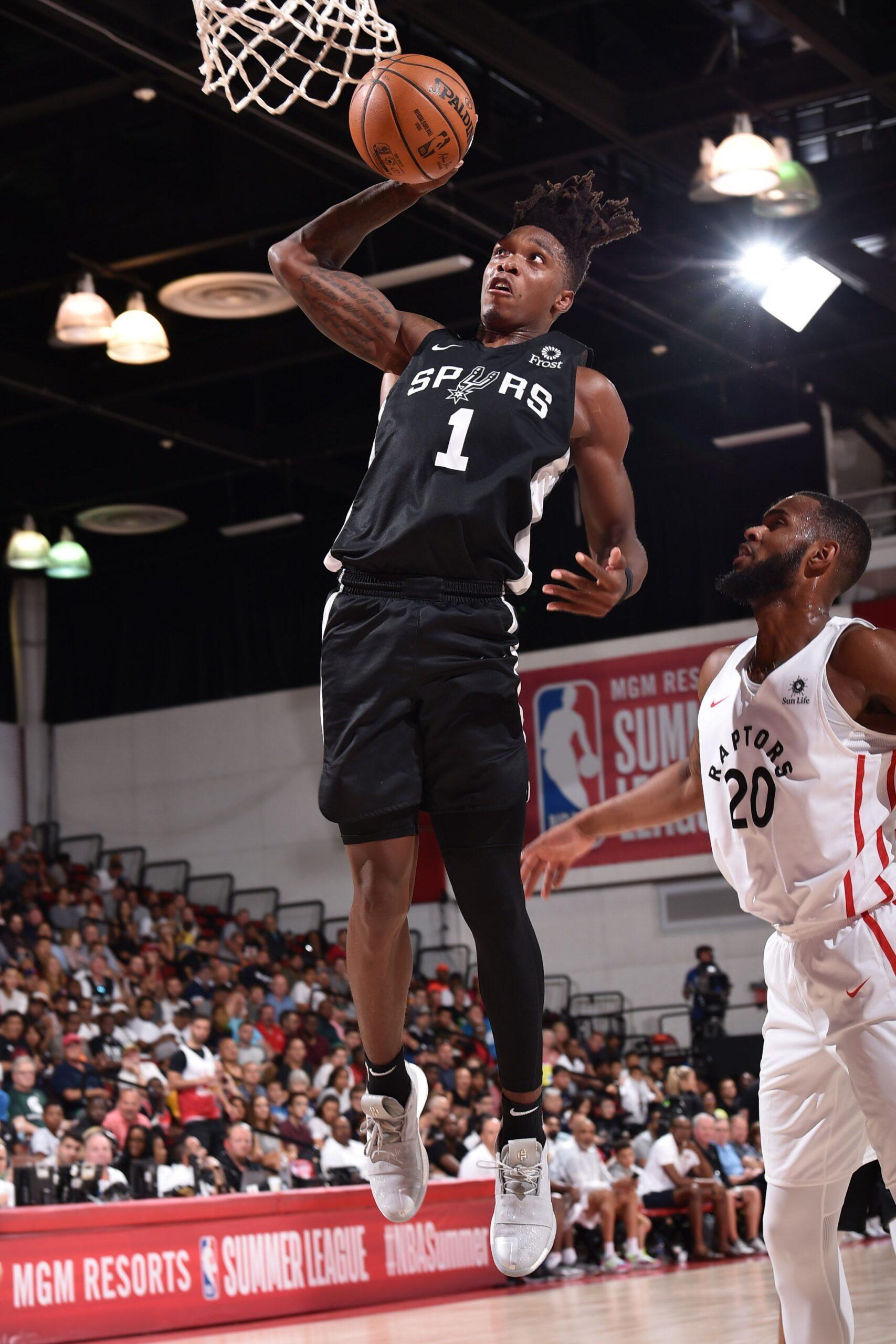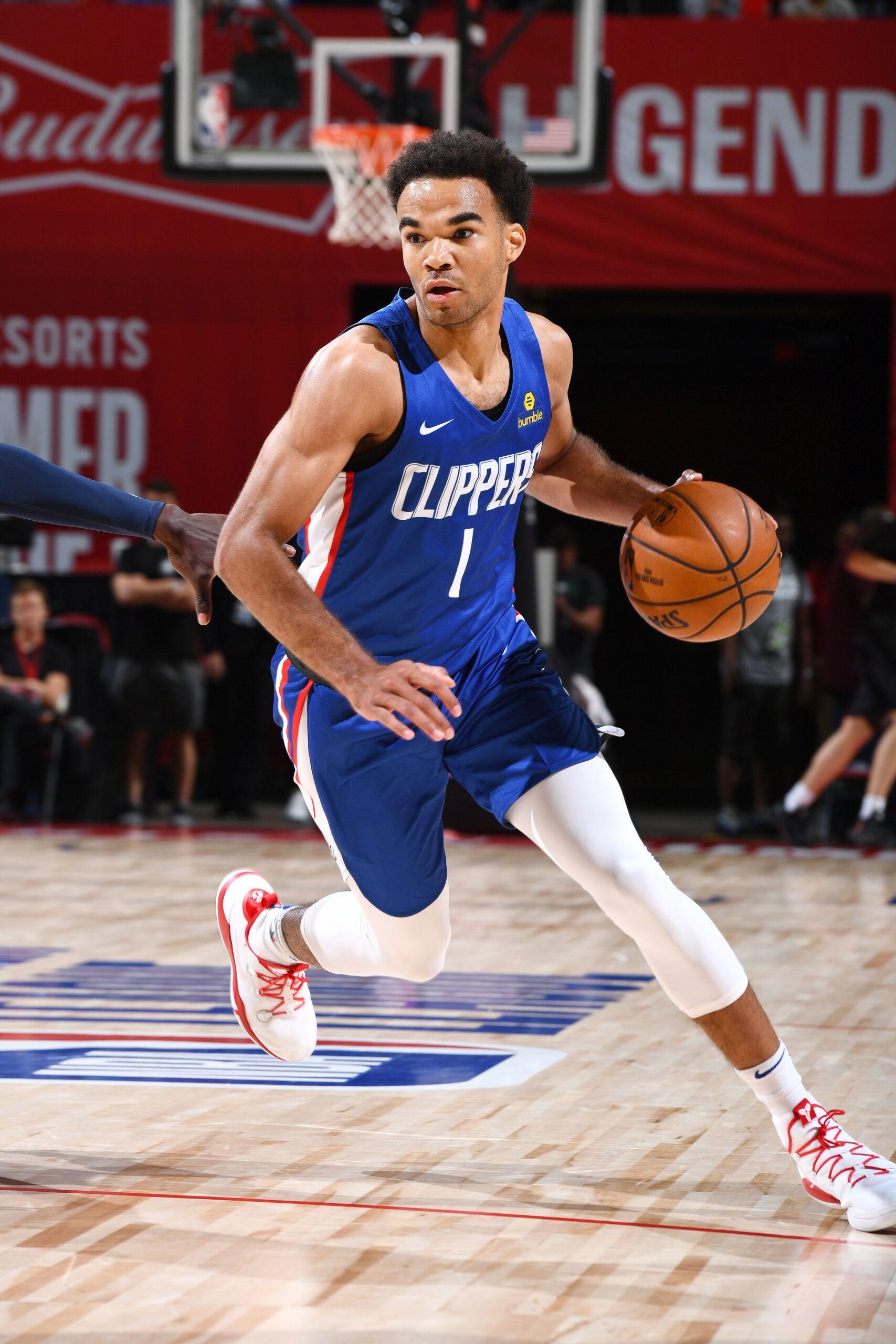It’s hard to know what’s real at Las Vegas summer league. The teams are thrown together haphazardly, most of the players with NBA contracts are in vastly different roles than they will have in the regular season, and everyone else is playing to get noticed instead of to win. What happens at the Thomas & Mack Center in early July is a mirage; the event’s only real purpose is to make everyone involved a few extra bucks. In that sense, it’s the perfect Vegas experience.
One of the few worthwhile takeaways from summer league is that it’s a bad sign if a second-year player struggles. Most of the top players from last year’s draft didn’t play in Vegas this year; the Magic’s Mohamed Bamba and the Knicks’ Kevin Knox were the only top-10 picks who did. Here’s a look at how five players who were selected a little later performed, and what it could mean for the teams who drafted them.
Miles Bridges, Hornets
Bridges, the no. 12 pick in last year’s draft, slipped under the radar as a rookie. The Hornets were making an all-out push for the playoffs behind Kemba Walker, so they didn’t have time to develop him; he was only 15th among rookies in minutes per game (21.2). Bridges showed flashes of talent: He’s an extremely athletic wing with the size (6-foot-7 and 225 pounds) to defend multiple positions, and who shot 3s just well enough (32.5 percent on 2.5 attempts per game) to play off the ball on offense. He just didn’t get a chance to show more.
He has been given a bigger opportunity in Vegas, where he is averaging 15.3 points on 59 percent shooting, seven rebounds, and one steal in three games. Bridges is at his best when he can create mismatches, whether it’s taking slower defenders off the dribble or using his size to bully smaller defenders in the lane. That is what he did to Jacob Evans, the no. 28 pick in last year’s draft, in last Friday’s win over the Warriors. Evans, at 6-foot-6 and 210 pounds, has good size for a wing, but still wasn’t strong enough to prevent Bridges from absorbing contact, bouncing off him, and creating enough separation to finish.
There is still a lot of room for Bridges to grow. The 21-year-old would struggle if he were forced to create this much offense in the NBA: He’s not a polished ball handler or playmaker, and it’s harder to create mismatches against the elite defenders he would face if he were a primary option. Bridges’s biggest selling point right now is athleticism. His dunk reel from his rookie season is up there with anyone’s. He had two rim-rattling dunks in Vegas, including one on which he hung in the air long enough to grab an offensive rebound in traffic and throw it down in one motion over multiple defenders.
But Bridges is more than just an athlete. He’s an intelligent player who rarely forces bad shots and already knows how to move without the ball. He was in the 87th percentile of players in the NBA last season when scoring off cuts. That ability is what separates Bridges from Malik Monk, the no. 11 pick in the 2017 draft, who has frustrated two different head coaches (Steve Clifford and James Borrego) in his first two seasons in the NBA. Monk played less as a second-year player (17.2 minutes per game) than Bridges did as a rookie.
Bridges will likely start next season on a Charlotte team that is rebuilding after losing Kemba. It’s a good situation for him. He will play a lot while still having enough veterans around him (Terry Rozier, Nicolas Batum, and Marvin Williams) to not be pushed too far outside his comfort zone on offense. The Hornets need Bridges to pop. He’s the closest thing they have to a future cornerstone.
Lonnie Walker IV, Spurs

Injuries held back Walker, the no. 18 pick in 2018, as a rookie. He had meniscus surgery before the start of the season and didn’t make his NBA debut until January. He played in only 17 games with the Spurs and spent most of his time in the G League.
Walker doesn’t fit the stereotype of a Spur: He’s a reckless player who comes into the game looking to attack his defender and never stops. He averaged 16.6 points on 43.9 percent shooting in the G League last season, and is averaging 24.8 points on 55 percent shooting in four games in Vegas. It’s hard to blame Walker for rarely moving the ball (one assist per game in Vegas) when he knows he can score at will. At 6-foot-5 and 205 pounds, he can consistently beat defenders off the dribble, elevate over them, and knock down tough jumpers. Walker has no mercy on players who can’t guard him. I almost felt bad for Orlando’s Erik McCree, a 25-year-old who spent last season in Italy, when Walker spent an entire game getting in his face and talking trash.
Walker is an example of a younger player who has to accept that he’ll be asked to do less in the NBA. The Spurs have seven veterans ahead of him (DeMar DeRozan, Dejounte Murray, Derrick White, Patty Mills, Bryn Forbes, Marco Belinelli, and DeMarre Carroll) on the perimeter. He can’t expect to have the freedom to break a play whenever he wants to and hunt for his own shot. Do that too often and Spurs head coach Gregg Popovich will put him on the bench and go with an older player he trusts. Walker, 20, has to knock down open shots, move the ball, and stay engaged on defense.
He’s in a similar position to Malik Beasley in Denver. Beasley, the no. 19 overall pick in the 2016 draft, had a usage rate of 22 percent while playing in 22 games as a rookie. He began receiving consistent playing time after he accepted a role as a 3-and-D player. He played in 62 games in his second season in the NBA and his usage rate slipped to 16.2 percent. Beasley, like Walker, can do more on offense. He scored 35 points in a game against the Rockets in February. He just has to wait his turn with the Nuggets for now. Walker will have to do the same.
Bruce Brown, Pistons
Brown, who played with Walker at the University of Miami, had an impressive rookie season for a player taken at no. 42. He started 56 games for a Pistons team that sneaked into the playoffs, and received consistent playing time (14.3 minutes per game) in their first-round sweep at the hands of the Bucks. He earned his spot by playing defense. At 6-foot-5 and 202 pounds, Brown is a good athlete with the size to defend both backcourt positions and the willingness to get physical when guarding bigger players. He often received the toughest individual assignment on the opposing team: His top three most frequently defended players last season were Donovan Mitchell, Bradley Beal, and Kemba Walker. Nate Silver’s new defensive statistic, DRAYMOND, rated him as one of the best defenders in the league. Brown brought that same defensive approach to Las Vegas. He frustrated two different first-round picks from last year’s draft: Portland’s Anfernee Simons shot 5-for-14 in his game against Detroit, while Indiana’s Aaron Holiday shot 7-for-21.
But the most encouraging thing about his play over the past week is what he did on offense. Brown went from averaging 4.3 points on 39.8 percent shooting and 1.2 assists per game as a rookie to 13.5 points on 41 percent shooting and 8.3 assists in four games in Vegas. He is more than just a defensive specialist. He’s a legitimately good playmaker who can run point.
The problem is that he’s not a consistent 3-point shooter, which limits how effective he can be in an off-ball role. Brown shot 25.8 percent from 3 on 1.3 attempts per game as a rookie. That is a shot that he has to knock down if he’s going to be playing off of Blake Griffin and Reggie Jackson in Detroit. The best thing for Brown, 22, could be a move to the bench, where he would get more chances to handle the ball. It would make sense for the Pistons, too, after they received Tony Snell in a salary-dump trade from the Bucks, giving them a more traditional 3-and-D option on the wing.
Brown’s defense will allow him to play for a long time in the NBA, which makes him a great second-round pick even if he never gets any better. His ceiling, like with every defensive-minded player, will depend on how much he can improve as a shooter.
Jerome Robinson, Clippers

Robinson was one of the fastest risers in last year’s draft. He was taken at no. 13 despite being widely projected as a second-round pick for most of the season. It’s unclear what the Clippers have in him after he played in only 33 games last season and was supplanted by fellow rookie Landry Shamet, who arrived midseason in the Tobias Harris trade. Robinson was drafted because of his ability to score off the dribble, but Shamet was a better fit in the 3-and-D role that Los Angeles needed to fill.
Robinson, unlike Bridges, Walker, or Brown, hasn’t received a big offensive role in Vegas. He is the third-leading scorer (12.7 points on 37 percent shooting) and third-leading passer (2.3 assists per game) on the Clippers’ summer league team. It wasn’t necessarily his fault; the players ahead of him were good. Mfiondu Kabengele, the no. 27 pick in this year’s draft, is an excellent interior scorer, while Terance Mann, the no. 48 pick, has been one of the most impressive rookies in Vegas. Mann plays a lot like Brown: He’s a big wing defender (6-foot-7 and 215 pounds) who can run point (5.7 assists per game).
It won’t be any easier for Robinson next season. The Clippers have more talent than they can even use. Robinson will be behind seven veterans on the perimeter (Kawhi Leonard, Paul George, Patrick Beverley, Lou Williams, Shamet, Maurice Harkless, and Rodney McGruder), and head coach Doc Rivers may want a more defensive-minded player like Mann to fill in any spot minutes that he has left.
Robinson has potential. He was great in his final season at Boston College, where he averaged 20.7 points on 48.5 percent shooting and 3.3 assists as a junior. He carved up Marvin Bagley III and Wendell Carter Jr. so badly in the pick-and-roll in an upset win over Duke that Coach K went to a 2-3 zone for the rest of the season. Robinson isn’t a great athlete, so he has a fairly low ceiling as a defensive player. His best chance to succeed in the NBA is in a more ball-dominant role. That just may not happen for him on the Clippers.
Kostas Antetokounmpo, Mavericks
It was easy to be cynical about Kostas. The Mavs drafted him at no. 60 and gave him a two-way contract even though he didn’t do much in his only season at Dayton. (This is a franchise that once signed Jaleel Cousins, the younger brother of DeMarcus, to its G League team.) But Kostas showed enough at summer league to make me believe he would be worth playing even if his last name weren’t Antetokounmpo.
His numbers aren’t that great: 7.3 points on 47 percent shooting, 1.7 rebounds, and one block in 15 minutes per game. But he made a lot of interesting plays. There aren’t many bigs who can defend on the perimeter, make Eurostep moves on the way to the basket, and knock down 3s.
To be sure, Kostas can’t do any of those things consistently. The 21-year-old is still raw on both ends of the floor, and he doesn’t have his older brother’s supernatural combination of athleticism and basketball IQ. He would be lucky to have a career as good as Thanasis, the oldest of the Antetokounmpo brothers, who was also drafted in the 2014 second round and has spent most of his career in Europe.
As someone from Dallas, here is where I start to dream. Giannis clearly cares about playing with his brothers; the Bucks just signed Thanasis to a two-year contract. Giannis will be a free agent in the summer of 2021, when Luka Doncic will still be on his rookie deal. A Big Three of Giannis, Luka, and Kristaps Porzingis would fit together perfectly. Giannis will probably feel pretty good about the Mavs if they develop Kostas into an NBA player. It’s worth a shot.
